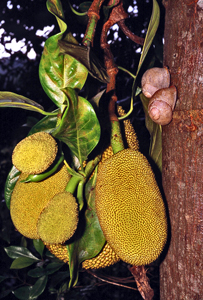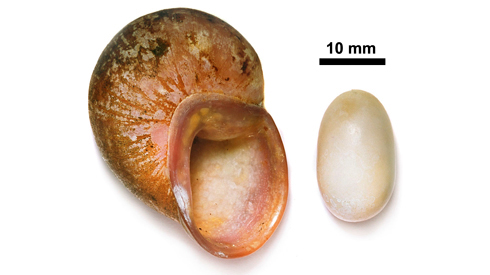Biology and behaviour

An Acavus snail resting on the trunk of a jak tree (Artocarpus nobilis). These snails have been observed feeding on the ripe fruit of the jak, which is a common tree species of village home gardens.
Life expectancy
Snails belonging to the genus Acavus are thought to be long-lived, possibly living longer than 10 years.
Reproduction
Acavus snails lay eggs that
- are large (1.5-2cm in length)
- look like bird eggs, having a rigid calcareous shell
- are usually laid singly
- are buried under leaf litter
Predators
Data on the natural predators of these snails is sparse, but casual and anecdotal observations suggest that at least one bird, the oriental crow pheasant, and a mammal, the mongoose (Herpestes spp.), feed on these snails.
Behaviour
These snails are arboreal (live in trees) and are often inactive during the day. They venture down to the ground at night to feed on fungi and fallen fruit.
